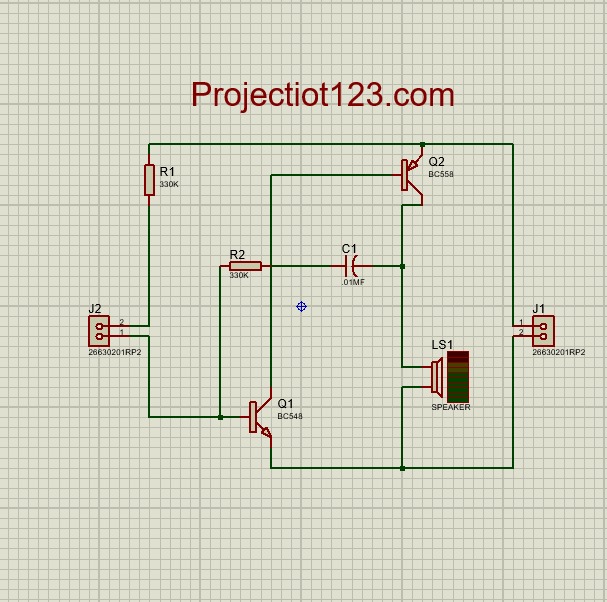Rain Alarm circuit in proteus
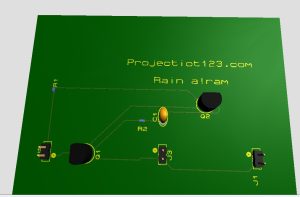 Rain Alarm circuit in proteus
Rain Alarm circuit in proteus
In this article we will learn how to make Rain Alarm circuit in proteus.
In the last post we will learn how to make Touch sensor simple Electronic circuit in proteus. You can visit our website,
I hope you appreciate my work, let’s discuss about today’s project.
Components…
- Prob
- Resistor (330k)
- Battery (3v)
- Transistor (BC 548)
- Resistor (10k)
- Speaker
- Capacitor (.01mf)
- Jumper wires
Diagram…
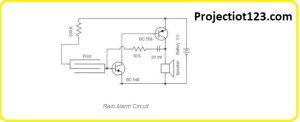
Construction…
- Connect the one prob with the one side of resistor 330
- Connect the other side of resistor 330 with the one side of Battery through ammeter pin of transistor
- Connect the collector pin of transistor with the one side of speaker through –ve side of capacitor
- Connect the +ve side of capacitor with the one side of resistor 10k
- Connect the other side of resistor 10k with the base pin of 2nd transistor
- Connect the base pin of 1st transistor with the ammeter pin of 2nd transistor
- Connect the 2nd side of battery with the collector pin of transistor through 2nd side of speaker
- Connect the 2nd prob with the base pin of 2nd transistor
3D PCB Design…
here is the pcb design of rain alarm circuit.

PCB Design Track in proteus…
here is the pcb design track of rain alarm circuit.
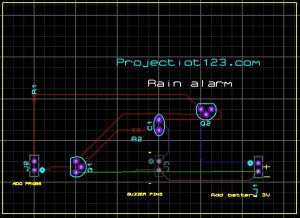
Working…
A rain alarm circuit is a simple electronic circuit that can be used to detect the presence of rain and trigger an alarm or other output. This type of circuit is often used in applications like automated irrigation systems, weather monitoring, or to alert users about rain or potential leaks in a roof.
Proteus Diagram…
here is the circuit diagram of rain alarm
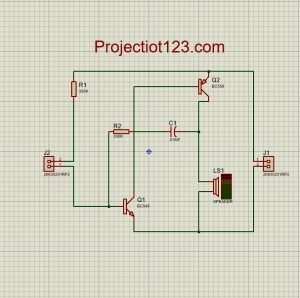
More electronics Projects
hare is the more interesting projects list below
- rain sensor library for proteus download
- Touch sensor simple Electronic circuit
- Rain Alarm Circuit
- Remote Control Traffic Lights in proteus simulation
Applications…
- Gardening and Agriculture
- Automated Irrigation Systems
- Roof Leak Detection
- Greenhouses
- Flood Warning Systems
Advantages…
- Early Warning
- Prevents Damage
- Water Conservation
- Energy Efficiency
- Low Cost

